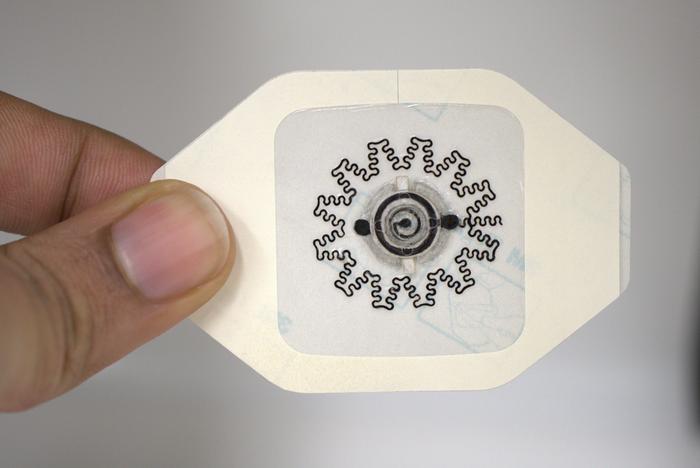A recent study from a team of researchers led by Singhal and colleagues introduces an innovative spatial framework that offers significant advancements in understanding gene expression profiling in bladder cancer caused by arsenic exposure. As the use of high-throughput technologies improves, the need for robust analytical frameworks to validate complex biological interactions becomes increasingly urgent. This research paves the way for integrating multiplex fluorescent in situ hybridization (FISH) with artificial intelligence-driven digital pathology, creating a powerful toolset for oncologists and geneticists alike.
At the heart of the study is the methodology used to assess how arsenic exposure influences gene expression in bladder cancer. Arsenic, an environmental carcinogen, has been implicated in various cancers, and its genetic impacts often remain poorly understood. By employing multiplex FISH, the study captures multiple gene expressions simultaneously, allowing researchers to observe the interplay among various genes and their spatial distributions within cancerous tissues.
The integration of AI into digital pathology is another revolutionary element of this framework. By utilizing machine learning algorithms, the researchers can analyze complex tissue images with unprecedented precision. This digital analysis reduces human error and enhances the reproducibility of the results, paving the way for more consistent diagnostic practices in oncology.
The researchers detailed their findings in assorted bladder cancer tissues collected from patients with varying levels of arsenic exposure. Utilizing advanced imaging techniques, they identified distinct gene expression patterns correlating with the severity of arsenic exposure. This correlation is critical as it may help identify at-risk populations and tailor preventive strategies more effectively.
Moreover, the spatial framework developed by Singhal et al. allows for comprehensive mapping of gene expression within the tumor microenvironment. By visualizing these expressions in three dimensions, the research elucidates how cancer cells interact with surrounding tissues, which is vital for understanding cancer progression and metastasis.
The implications of their findings extend beyond mere curiosity; they hold promise for clinical applications as well. By establishing a clearer link between environmental toxins like arsenic and genetic aberrations in cancer, this research could lead to enhanced screening methods and preventative strategies against bladder cancer. Furthermore, the multiplex FISH technique enables more personalized medicine approaches, where patients can receive tailored treatments based on their individual genetic profiles.
In advancing the field of oncology, this study also underscores the role of artificial intelligence in transforming traditional pathological practices. The use of AI in analyzing and interpreting complex biological data represents a paradigm shift that could revolutionize cancer diagnostics and treatment planning. The framework proposed not only fills a vital niche in bladder cancer research but also showcases the potential for similar strategies to be applied in other oncological studies.
Importantly, the findings also raise a critical public health issue regarding environmental exposure to carcinogens. With increasing evidence linking arsenic and other environmental toxins to cancer, this research calls for stronger regulations and more proactive public health measures to reduce exposure levels among communities, particularly those living in areas with known arsenic contamination.
Overall, the innovative approach taken by this research group is a testament to the synergy between biology, technology, and public health. The authors advocate for further exploration and validation of their framework across different types of cancers and other environmental exposures, pushing the boundaries of our understanding of cancer biology.
In conclusion, the study by Singhal and coworkers is a trailblazer in intertwining spatial frameworks with AI and gene expression analyses. It paints a vivid picture of the complex interactions shaping cancer at the genetic level while setting the stage for future advancements in oncology. As the fight against cancer continues, research like this is critical in providing new insights that could one day lead to breakthroughs in prevention and treatment.
The significance of this research cannot be overstated; it illustrates the dynamic interplay between environmental factors and genetic predispositions in cancer development. As researchers delve deeper into this field, we can anticipate more refined methodologies that will enhance our ability to combat the global cancer epidemic.
The novelty of the findings and the method adopted will stimulate discussions across disciplines, igniting interest not only among oncologists but also among environmental health experts, geneticists, and policy-makers. Advocacy for regulatory changes will be an essential part of the narrative as this research could serve as a catalyst for more robust health policies aimed at mitigating cancer risks associated with environmental exposures.
Consequently, this study exemplifies the importance of collaborative efforts in research; interdisciplinary approaches are vital in tackling multifaceted health issues like cancer. By merging expertise from various fields, scientists can create tools that are not only innovative but also impactful in real-world applications, potentially saving lives in the process.
As the research community continues to build on these findings, the hope is to expand this framework, tailoring it further to address a broader range of environmental factors impacting human health and disease development. The future is indeed promising for employing advanced technologies to unravel the complexities of cancer etiology and enhance our understanding of how we might prevent it.
Subject of Research: Arsenic exposure and its role in bladder cancer gene expression profiling using multiplex FISH and AI technology.
Article Title: A novel spatial framework to validate arsenic exposure gene expression profiling in bladder cancer using multiplex FISH and AI-powered digital pathology.
Article References:
Singhal, S., Singhal, S., Gardner, K.L. et al. A novel spatial framework to validate arsenic exposure gene expression profiling in bladder cancer using multiplex FISH and AI-powered digital pathology. Sci Rep 15, 37925 (2025). https://doi.org/10.1038/s41598-025-23396-y
Image Credits: AI Generated
DOI:
Keywords: Bladder cancer, arsenic exposure, multiplex FISH, gene expression profiling, AI-powered digital pathology.
Tags: advancements in cancer diagnosticsAI in digital pathologyarsenic exposure and gene expressionbladder cancer researchcomplex biological interactionsenvironmental carcinogens and cancerhigh-throughput technologies in researchmachine learning in oncologymultiplex fluorescent in situ hybridizationprecision medicine in bladder cancerreducing human error in pathologyspatial gene expression analysis






